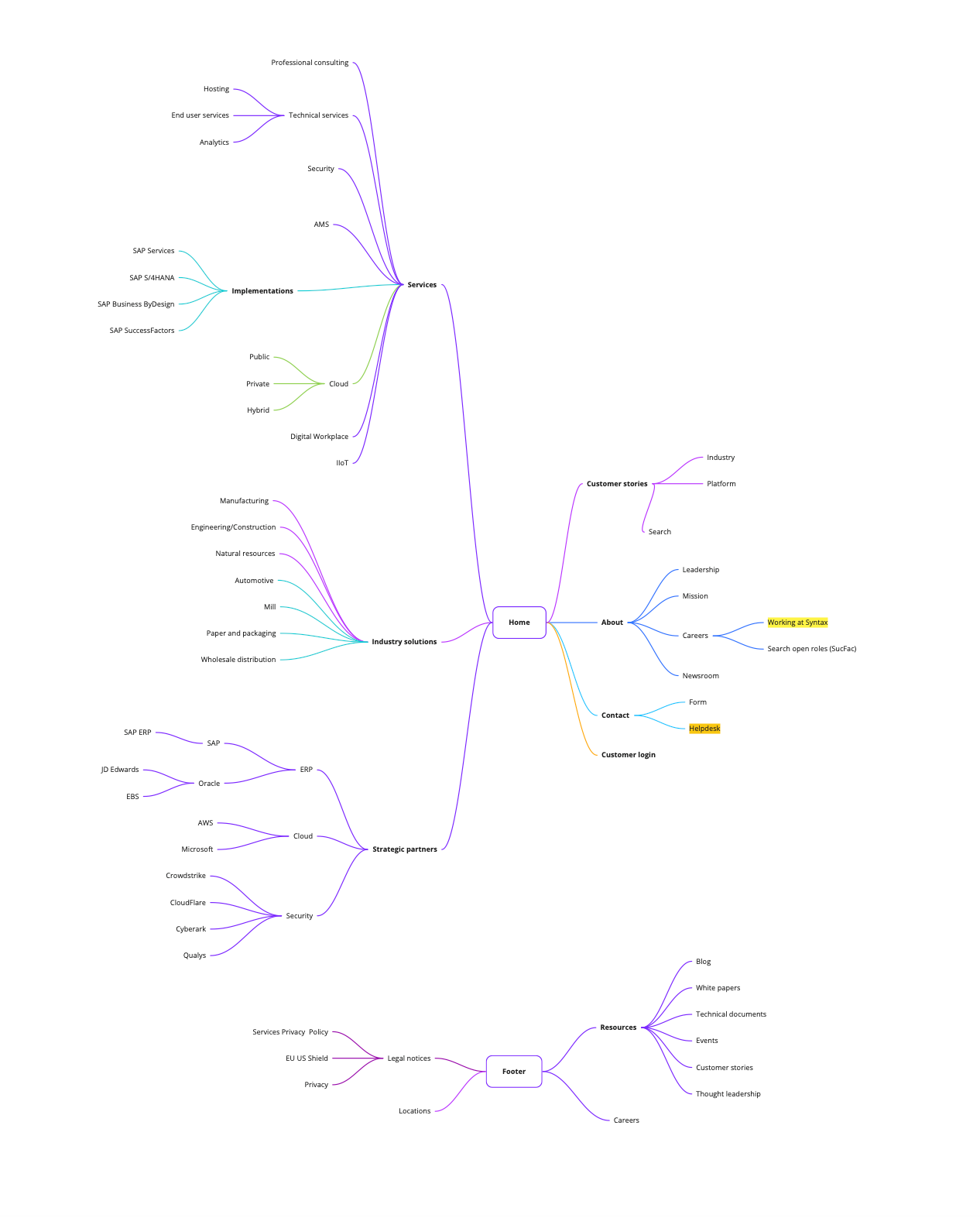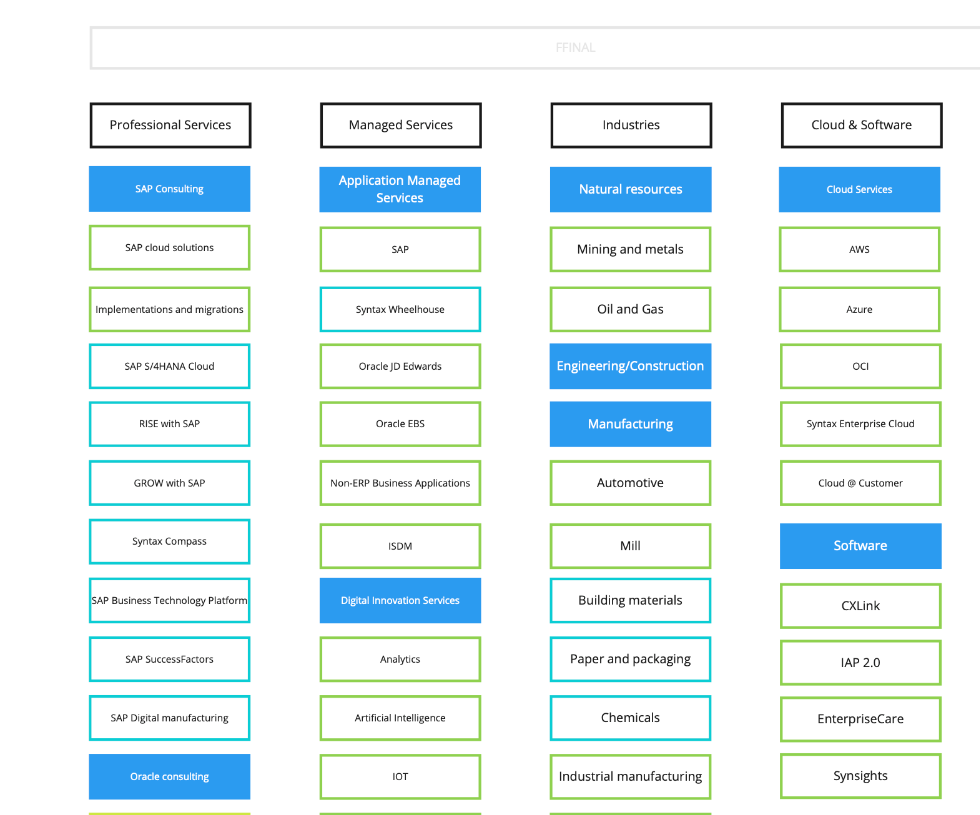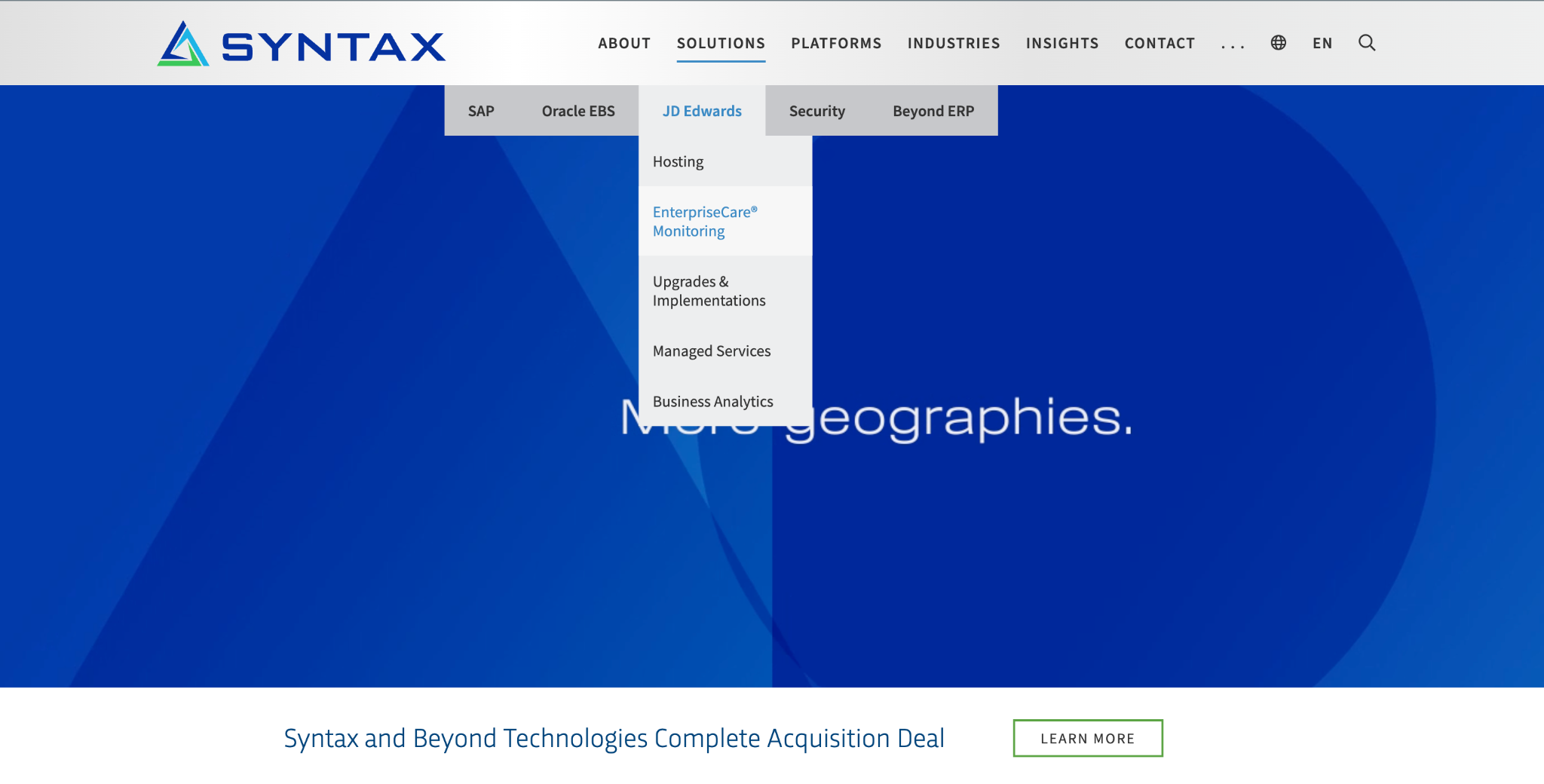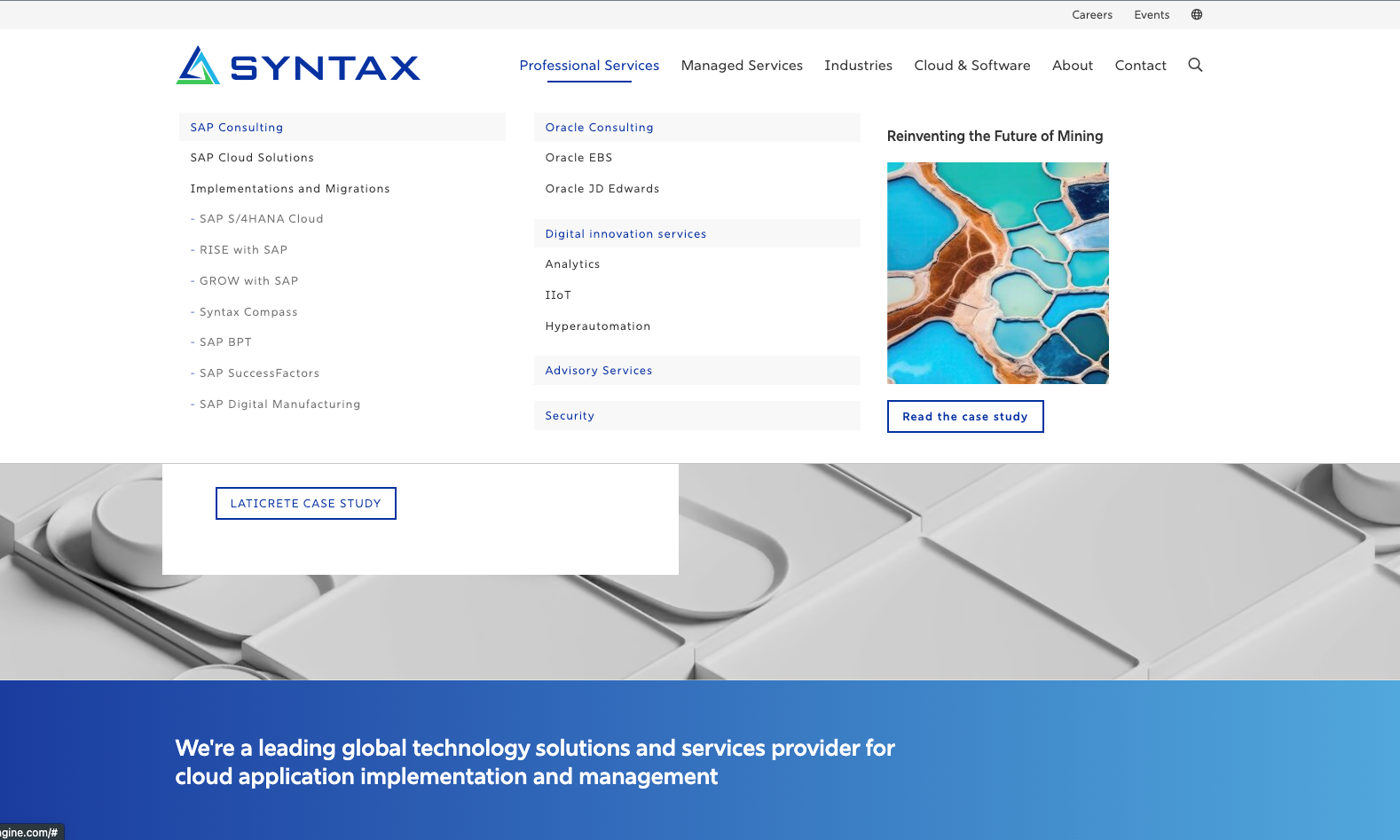← Back
.com taxonomy and navigation
Tasks
- Combine the navigation of two distinct sites for two distinct entities that integrated under an acquisition
- Update the menu taxonomy and navigation to reflect the incorporation of acquired companies skills and products
- Align to new business objectives and go to market strategies
- Remove redundant and competing paths for self-service discovery
- Enhance the SEO and site search efficacy by normalizing naming conventions, hierarchies and solution relationships
- Retain all value content links and lead gen associated with CRM system for campaigns and demand generation
- Retire acquisition web and implement redirects for evergreen content and assets
- Design modular taxonomy and navigation that could expand as company and offerings grew; must be flexible for GDPR compliance for European websites
Challenges
- Large portfolio that lacked common language usage, URL structures and usability strategies
- No content models for page creation
- No retirement policies for EOL pages
- No mobile policies
- No dedicated dev team
- More than two dozen stakeholders across two companies marketing, sales and business development groups
- European sites with unique content that could not be amended or changed for business and legal purposes
- Legal mandate for company integration and offering merge
Timeframe
- 1 month fact gathering
- 2 month build
- 3 months for content delivery
- 6 months end to end
Team/roles
- Web strategist - align with marketing and SEO
- Front-end dev - deliver prototype and components
- UX designer - lead discovery, findings and prototyping
- Content lead - provide editorial and control of new content
Activities and methods
- GA4 funnel review and page penetration analysis from last 12 months
- Content integration workshop with SMEs (interviews and DT session)
- As-is/to-be menu assessment (Miro)
- Mind-mapping of proposed state (Miro)
- Navigation hierarchy on schema (spreadsheet represented in Miro)
- _parent/_child relationship of menus validation with Product and Sales (comment review on Miro)
- Prototype of mega menu for two options
- Live prototype for testing
Measurement
- Two web properties menus and taxonomies merged from mother company and acquisition company to create single site navigation. 104 menu choices reduced to 57 for clarity and better search.
- 32% reduction in menu choices allowing cleaner self-service and refined search
- Menu evolved to linear structure removing contextual fractures in story
- Page templates reduced by 50% for connected content architecture
Defining the to-be state
Sort and prioritize the taxonomy based on the product and GTM

This mind map was built to show the relationships of the proposed taxonomy for Product and Marketing review.
Menu hierarchy
A north/south, east/west view of the menu.

A wireframe representation of the navigation taxonomy, hierarchy by color code and relationships. The color code was for Product roadmap validation and easy reference to levels with the dev team when discussing _parent/_child structures.
Redesign of menu UI, as-is
A restructure of the legacy menu design and functionality.

The legacy version of the menu used the "window shade" method and did not reflect contextual or linear relationships that were necessary for the new taxonomy and business messaging.
Redesign of menu UI, to-be
Proposing a menu system that allows for linear narrative.

The "mega menu" provided the opportunity to show complete product and service family context, as well as a space for related content that would aid in the self-service user journey.
Build and adoption
The new CSS and menu structure was moved to staging environment and prepared for UAT before a scheduled launch in March 2024. All 3rd party HubSpot pages and previous web entities from acquisitions were rolled into the search functionality or redirected from their previous URLs.
Post a comment